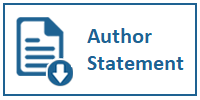Sebuah Pola Cluster Geospatial Eksplorasi Kejahatan Narkoba di DKI Jakarta
DOI:
https://doi.org/10.31937/si.v9i1.1514Abstract
This study is focused on building some visualizations of crimes that occur in the Jakarta area in general, and specifically on drug problems. As the largest city in Indonesia, Jakarta faces the highest number of crimes throughout Indonesia. But unfortunately, there is a lack of geospatial visualization about crime in Jakarta. The visualizations are presented as some cluster models. These models show which parts of Jakarta with a high level of crime, the biggest crimes in Jakarta, and the types of crimes that occur in Jakarta. The biggest crime in Jakarta is also explained with some additional information such as the type of crime, age, and distribution. Clustering is divided into three, which are high, medium, and low. The grouping model was built using Tableau with the K-means algorithm. The results of this study can be used for the Provincial Government of DKI Jakarta to make strategic plans to develop actions that can reduce crime rates in Jakarta.
Downloads
Downloads
Published
How to Cite
Issue
Section
License
Authors retain copyright and grant the journal right of first publication with the work simultaneously licensed under a Creative Commons Attribution-ShareAlike International License (CC-BY-SA 4.0) that allows others to share the work with an acknowledgement of the work's authorship and initial publication in this journal.
Authors are able to enter into separate, additional contractual arrangements for the non-exclusive distribution of the journal's published version of the work (e.g., post it to an institutional repository or publish it in a book), with an acknowledgement of its initial publication in this journal.
Copyright without Restrictions
The journal allows the author(s) to hold the copyright without restrictions and will retain publishing rights without restrictions.
The submitted papers are assumed to contain no proprietary material unprotected by patent or patent application; responsibility for technical content and for protection of proprietary material rests solely with the author(s) and their organizations and is not the responsibility of the ULTIMA InfoSys or its Editorial Staff. The main (first/corresponding) author is responsible for ensuring that the article has been seen and approved by all the other authors. It is the responsibility of the author to obtain all necessary copyright release permissions for the use of any copyrighted materials in the manuscript prior to the submission.















